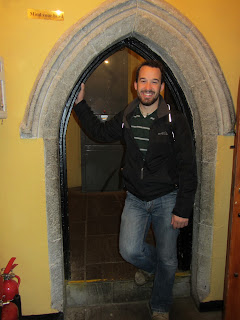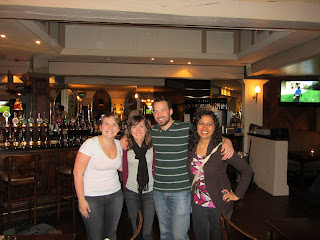The cathedral was rebuilt and was later the constituency of Oliver Plunkett, who, later the 17th Century, was martyred for preaching Catholicism. His head was brought back and lies within the church sanctuary to this day in a gold case. The church also "supposedly" houses one of the original pieces of the Cross, which is displayed along the far wall of the sanctuary.
St Peter's Cathedral of Drogheda
Saint Peter
Within this silver inset is supposedly a splinter from the original cross of Jesus
Even though the picture is unclear, this is Oliver Plunkett's old dry head
Oliver Plunkett in a more edifying light
Chapel Gate
St Mary Magdalene Friary
The Boyne
Remnants of the walls on which the Battle of Drogheda was fought
Hill Fort and Martello Tower






























































